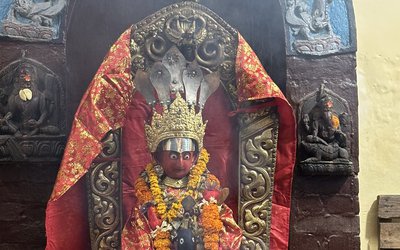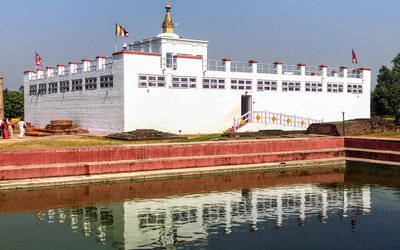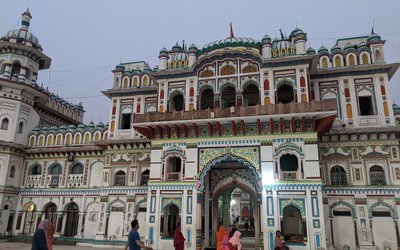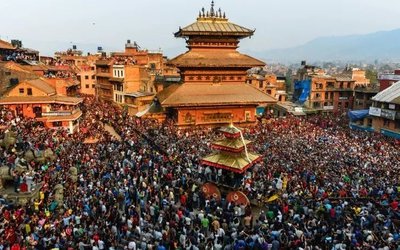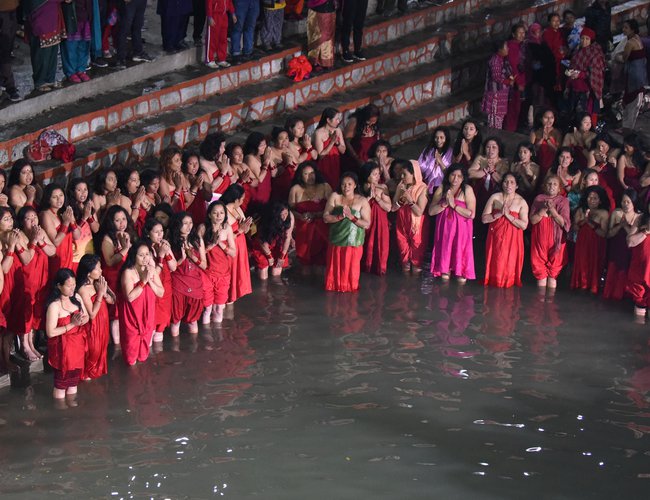
As it said by British commander William Kirkpatrick Kathmandu is a city with more temple than man. Similarly, Kathmandu has many days than festivals. Among many festivals, Swasthani Bratakatha is one of them.
By taking bath at Shalinadi, a tributary of Bagmati River, devotees in Sankhu, Shankhrapur Municipality, have started a month-long hard fast devoting to Swasthani.
The month-long Shree Swasthani Brata Katha festival, devoted to goddess Shree Swasthani. The month-long ritual and fast begin every year on the full moon day of Poush, the ninth month of Nepali calendar, and ends on the full moon day of Magh, the next month.
The devotees, both men, and women observe the fasting wishing for a prosperous life, perpetual luck and happiness of their families.
According to Laxmi Prasad Shrestha, president of Shree Madhavnarayan Swasthani Fasting and Salinadi Improvement Committee, this year a total of 205 people registered their names for fasting. Among them 14 are men and 191 are women. The organizers expected that the number would increase in the next three days.
All devotees gather at the temple premises early in the morning and take a holy bath in the Salinadi every morning for the whole month worshipping Madhav Narayan (Lord Vishnu) at mid-day, he informed.
Women devotees from today do not use any cosmetics and even shoes. They walk barefoot and take a single meal a day.
Both married and unmarried women worship Shiva and observe fasting, praying for fulfillment of their wishes for a happy and prosperous conjugal life. Unmarried women worship Shiva and Parvati in the hope of getting a good groom.
All the devotees need to walk to various historical and other important shrines like Pashupatinath, Pharping, Panauti, and Chagu Narayan barefoot on different days during their fasting.
The mention of Salinadi (river) situated in Sankhu Shankhrapur Municipality, in the Swasthani Brata Katha makes it a major holy place for the devotees to visit during the month of Swasthani Brata Katha recitation.
People perform special symbolic worships by painting the Mahamantra Om in a copper plate and making a Shiva Linga in the plate on the symbol on the final day of the Katha. The Swasthani Brata is completed after performing the puja in the Shiva linga on the final day of the brata.
What Is Swasthani Brata Katha
The Swasthani Brata Katha is written in the Nepali language, however, some believe it to be written in the Newari language first and it is also said that the people of Sankhu village still have the handwritten Swasthani book in Newari language. However, the narration of the story in other languages differs from that in Nepali.
With chakra, Trishul, sword, and lotus in each of her hands, Goddess Swasthani is believed to be a four-handed goddess sitting in the center of Asta Matrika or eight Goddesses power. The Asta Matrika is Baishanavi, Brahmi, Mahakali, Maheshwari, Kaumeshwari, Barahi, Indrayani and Chamunda.
The Katha starts on full moon day of the Nepali month of Poush (January) and lasts for a whole month until the next full moon. The story of Swasthani is recited in the Nepali households during this lunar month; however, it is not compulsory to recite the story or to observe fast. Usually, the families that have been practicing this tradition for long recites the story although some might not keep fast as it is one of the toughest fast to practice.
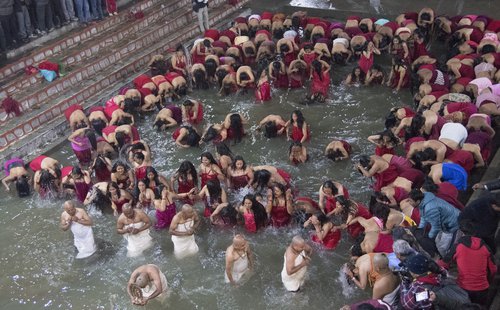
The women who keep fast for a whole month take only one meal a day and read the story of Swasthani Mata in mid-afternoon while the people who do not fast also narrate the story either early in the morning or in the evening just after the daily puja.
The Swasthani Brata Katha book is worshiped with abir, Kesari, sesame, barley, flowers; incent sticks and batti before the recitation. And the women who keep the fast offer dhup (incent sticks), batti (butter lamps), sesame Laddu (ball cakes) and flowers, each in the count of 108. It is believed that the goddess Swasthani grants the wishes of her devotees who keep fast in her name.
Swasthani Brata Katha is a story narrated by Lord Kumar (Kartikay), elder son of Lord Shiva and Goddess Parvati, to Saint Agasthi about the formation of the universe. The chapters begin with ‘Kumarji agya garnu huncha hey Agasti muni which means ‘Lord Kumar states hey Saint Agasthi’.
The stories in the book are mainly about the devotees who performed sins due to their ignorance and were rescued by goddess Swasthani after they performed the month-long fast and puja to please her. Some of the chapters are focused on goddess Parvati and some about Sati Devi, Lord Shiva’s first wife, and goddess Swasthani recurring her from her troubles and sufferings.
- Supreme Court upholds appointment of 52 officials
- Jul 03, 2025
- Weather Forecast: Generally Cloudy In The Hilly Areas With Heavy Rainfall In Some Areas Of Bagmati And Koshi Province
- Jul 03, 2025
- MCA-Nepal Welcomes Continued U.S. Support for MCC Nepal Compact Implementation
- Jul 02, 2025
- Sutlej to sell electricity from Arun III to Uttar Pradesh
- Jul 02, 2025
- PHDCCI India-Nepal Centre Organises “India-Nepal Fintech Summit 2025” In New Delhi
- Jul 02, 2025


